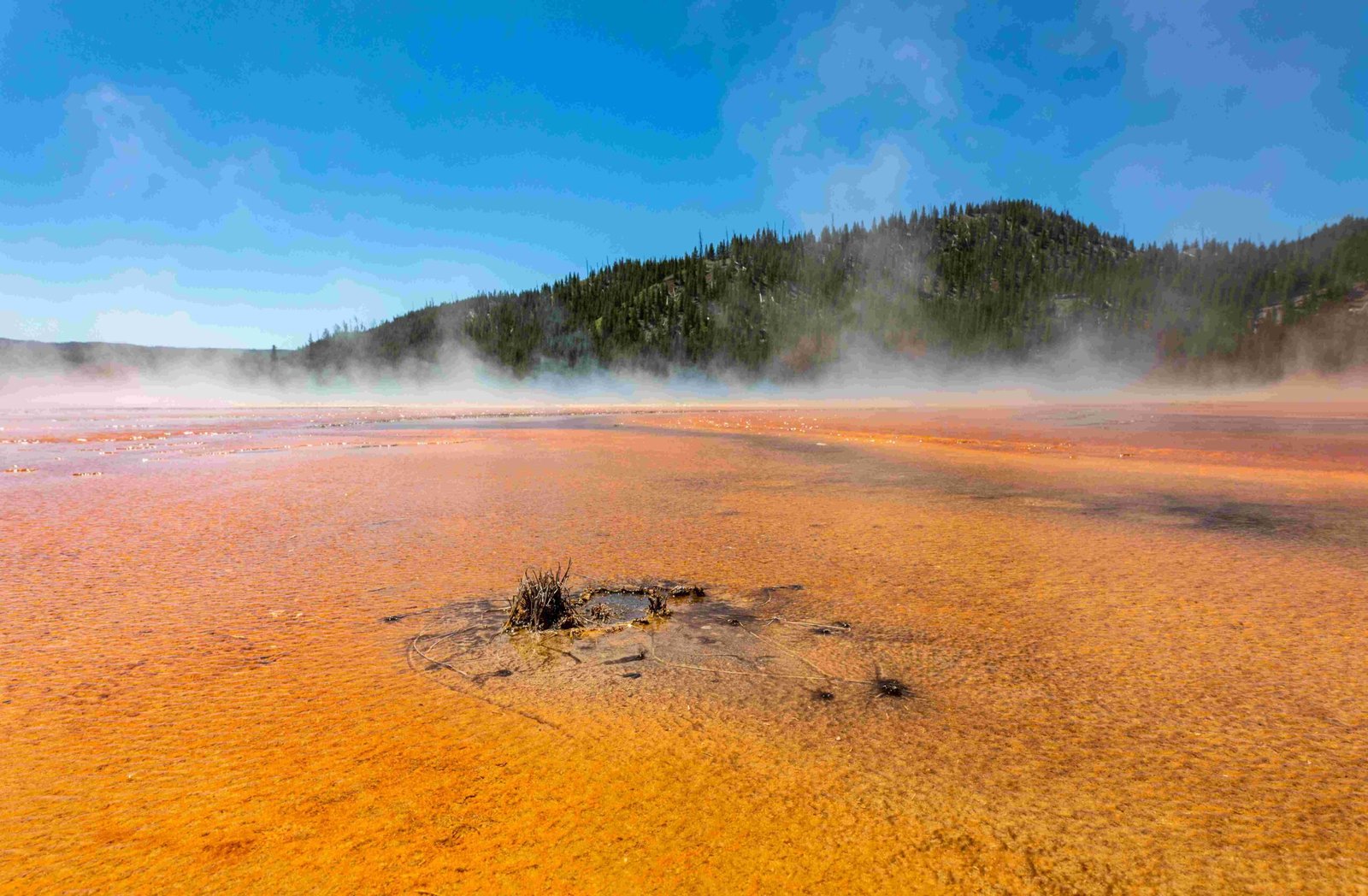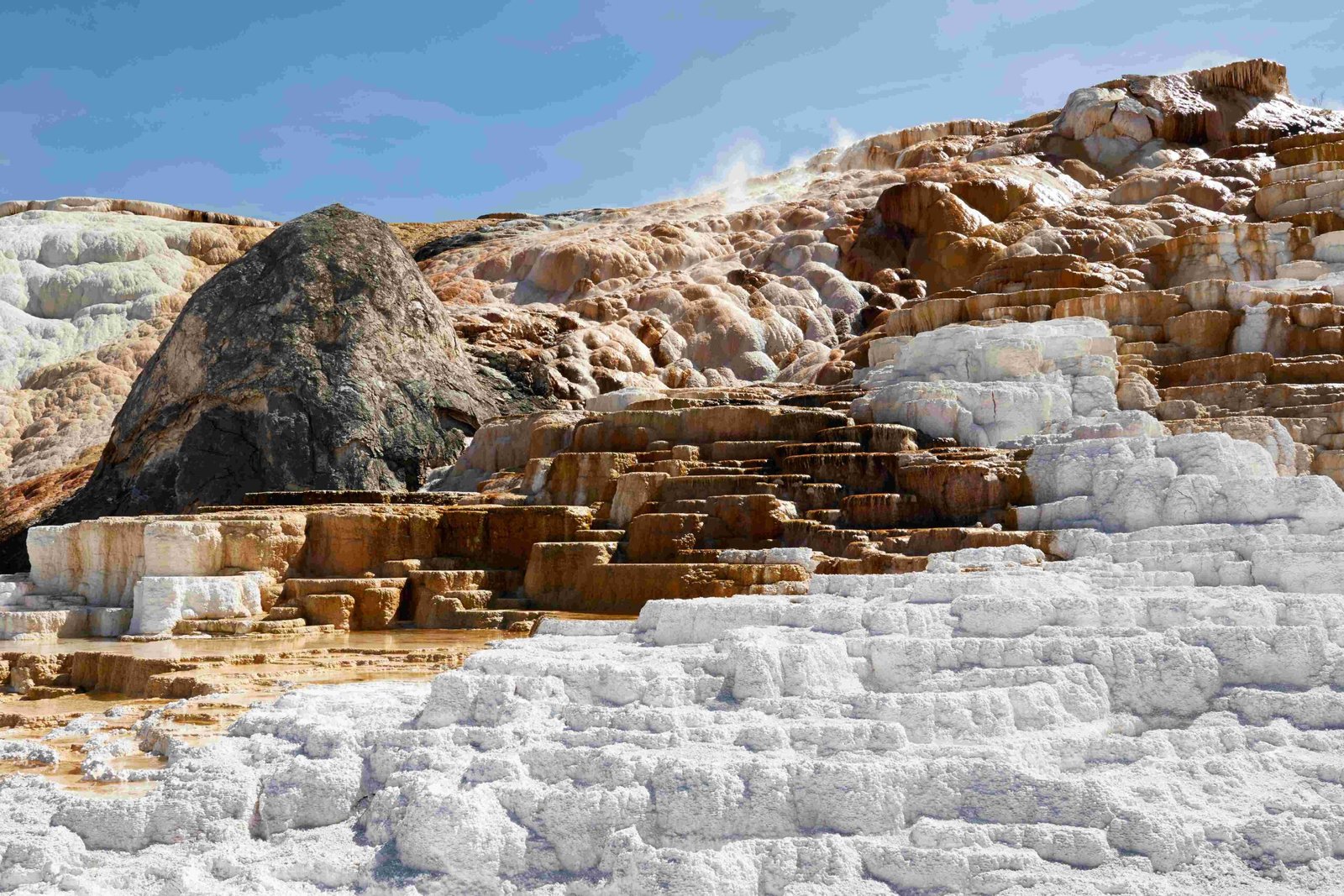Yellowstone National Park offers a diverse range of camping experiences across its 12 campgrounds, accommodating over 2,000 sites. From RV-friendly locations with full hookups to rustic tent sites in the wilderness, the park caters to all types of campers. With options for both reservations and first-come, first-served sites, Yellowstone provides opportunities for planned trips and spontaneous adventures alike. The park’s camping facilities vary widely, offering amenities such as flush toilets, showers, and dump stations at some locations, while others maintain a more primitive atmosphere.
What Are the Camping Options in Yellowstone National Park?

Yellowstone National Park offers a variety of camping options to suit different preferences and needs:
- Tent Camping: Available at most campgrounds, perfect for those seeking a traditional outdoor experience.
- RV Camping: All campgrounds accommodate RVs, with Fishing Bridge RV Park offering full hookups.
- Backcountry Camping: For adventurous souls looking to explore the park’s remote areas (requires separate permits).
Here’s a breakdown of the campgrounds and their key features:
| Campground | Sites | Amenities | Reservation |
|---|---|---|---|
| Bridge Bay | 432 | Flush toilets, showers, laundry | Reservable |
| Canyon | 250 | Flush toilets, showers, laundry | Reservable |
| Fishing Bridge RV Park | 325 | Full RV hookups, no tents | Reservable |
| Grant Village | 400 | Flush toilets, showers, laundry | Reservable |
| Indian Creek | 75 | Vault toilets | First-come, first-served |
| Lewis Lake | 85 | Vault toilets | First-come, first-served |
| Madison | 250 | Flush toilets, dump station | Reservable |
| Mammoth | 85 | Flush toilets | First-come, first-served (Oct 15 – Apr 1) |
| Norris | 100 | Flush toilets | First-come, first-served |
| Pebble Creek | 30 | Vault toilets | First-come, first-served |
| Slough Creek | 29 | Vault toilets | First-come, first-served |
| Tower Fall | 30 | Vault toilets | First-come, first-served |
How Can I Reserve a Campsite in Yellowstone?

Reservations for five campgrounds (Bridge Bay, Canyon Village, Fishing Bridge RV Park, Grant Village, and Madison Junction) can be made through Xanterra Parks & Resorts by calling (307) 344-7311. The remaining campgrounds operate on a first-come, first-served basis. It’s crucial to plan ahead, especially for peak season (July and August), when campsites fill up quickly.
What Amenities Are Available at Yellowstone Campgrounds?
Amenities vary widely across Yellowstone’s campgrounds:
- Flush Toilets: Available at Bridge Bay, Canyon, Fishing Bridge RV Park, Grant Village, Madison, Mammoth, and Norris.
- Showers and Laundry: Found at Bridge Bay, Canyon, Fishing Bridge RV Park, and Grant Village.
- Dump Stations: Located at Bridge Bay, Canyon, Fishing Bridge RV Park, Grant Village, and Madison.
- Generator Use: Permitted at most campgrounds, but check specific rules for each site.
Are There Accessible Camping Options in Yellowstone?
While detailed information on accessible sites is limited, Yellowstone aims to make its facilities inclusive:
- Campgrounds with flush toilets and showers are more likely to have accessible facilities.
- Some campgrounds feature paved roads and pull-through sites, which can be more accommodating for those with mobility issues.
- It’s advisable to contact the park directly for specific accessibility information and to request accommodations if needed.
What Activities Can Campers Enjoy in Yellowstone?
Yellowstone offers a plethora of activities for campers:
- Hiking: Many campgrounds are located near popular trails. For example:
- Canyon Campground: Close to trails leading to the Grand Canyon of the Yellowstone River, Cascade Lake, and Mount Washburn.
-
Madison Campground: Provides easy access to trails around Old Faithful, Norris Geyser Basin, and the Canyon area.
-
Fishing: Allowed with a park fishing permit. Be sure to check specific regulations and restrictions.
-
Wildlife Viewing: Yellowstone is famous for its diverse wildlife, including:
- Grizzly bears
- Wolves
- Bison
- Elk
- Moose
Remember to observe wildlife from a safe distance and follow park guidelines.
- Ranger-Led Programs: The park offers various educational programs, including:
- Guided hikes
- Wildlife talks
- Astronomy nights
- Junior Ranger programs for children
What Should I Pack for Camping in Yellowstone?
Essential items for your Yellowstone camping trip include:
- Tent or RV equipment
- Sleeping bags and pads
- Warm clothing (layers are key)
- Rain gear
- Sturdy hiking boots
- Bear spray
- Bear-resistant food containers
- First aid kit
- Insect repellent
- Sunscreen
- Headlamp or flashlight
- Map and compass
- Water bottles and water purification system
- Cooking equipment and food supplies
What Safety Precautions Should Campers Take in Yellowstone?
- Wildlife Safety:
- Keep a safe distance from all wildlife (100 yards from bears and wolves, 25 yards from other animals).
- Store food, trash, and scented items in bear-proof containers or lockers.
-
Carry bear spray and know how to use it.
-
Weather Preparedness:
- Be ready for sudden weather changes, including storms and temperature drops.
-
Check weather forecasts regularly and plan accordingly.
-
Hydrothermal Area Safety:
- Stay on designated boardwalks and trails in geothermal areas.
-
Never touch or approach hot springs or geysers.
-
Hiking Safety:
- Always hike with a partner and inform someone of your plans.
- Carry plenty of water and high-energy snacks.
- Be aware of altitude sickness symptoms.
What Challenges Might Campers Face in Yellowstone?
-
Weather Fluctuations: Temperatures can vary dramatically, even in summer. Be prepared for cold nights and possible snow at higher elevations.
-
Crowds: During peak season (July-August), campgrounds fill quickly, and popular attractions can be crowded.
-
Limited Services: Some campgrounds have basic amenities only. Plan accordingly, especially for food and water needs.
-
Wildlife Encounters: While exciting, they can also be dangerous if proper precautions aren’t taken.
-
Altitude: Yellowstone’s elevation ranges from 5,282 to 11,358 feet. Some visitors may experience altitude sickness.
Camping in Yellowstone National Park offers an unparalleled opportunity to immerse yourself in one of America’s most iconic natural landscapes. With proper planning and respect for the environment, your camping experience can be both safe and unforgettable. Remember to practice Leave No Trace principles to help preserve this magnificent park for future generations.
References:
1. https://www.nps.gov/yell/planyourvisit/campgrounds.htm
2. https://www.yellowstoneparknet.com/park_campgrounds/
3. https://www.yellowstonepark.com/where-to-stay-camp-eat/camping-rv-parks/where-should-i-camp-in-yellowstone/

